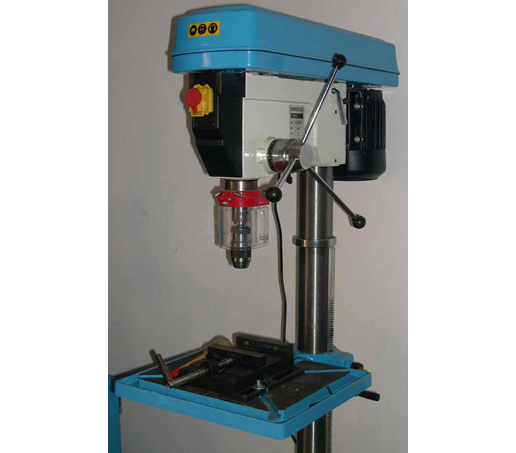Tools and Equipment
5. Hazards resulting from the use of fixed machine-tools
This section refers to fixed machine-tools used in electrical installation work in machining or shaping activities, either in the on-site workshop or in the store workshop. Among these machine-tools, the most commonly used are:
Grinder, drill press, punch, motorised pipe threader, hydraulic pipe bender, electric tubing bender and band saw. Except for the hydraulic pipe bender, the rest of these machines are actuated by electricity.
Most important hazards:
- Blows and cuts to the hands or other parts of the body. Getting trapped.
- Eye injuries due to the projection of fragments or particles.
- Electrical Contacts.
- Noise.
- Fires.
Principal causes:
- Inappropriate use of the machines.
- Use of faulty machines.
- Use of poor quality machines.
- Not using personal protection equipment.
- Lack of inspection of the work surroundings.
Preventive measures:
- Use quality machine-tools in accordance with the type of work to carry out.
- Properly instruct personnel in the use of each type of machine-tool.
- Check that the machine-tool is in a good state of repair.
- Carry out periodical checks and maintenance.
- Check that machine-tools have the appropriate protective elements, which must never be dismantled.
- Check the state of the power lead (there should be no bare copper wires or connections with insulating tape) and the connection plug (do not connect wires directly).
- Check that machine-tools have an earth connection and that they are connected to switchboards protected by current-operated circuit-breakers.
- Choose the work tool and machine speed on the basis of the characteristics of the material to work on. The tool should be in good condition.
- The machine must always be disconnected from the power supply when changing the tool.
- The parts to work on are to be positioned with the machine off and secured by means of clamps.
- Tools, callipers, brushes, etc. are to be situated when they can be reached by the operator, but off the machine workbench.
- Wear suitable clothing for the job that is not loose and do not wear rings, watches, bracelets or any other object that might get trapped by the moving parts of the machine.
- Avoid working in the vicinity of combustible materials. Should this be necessary, cover such materials with some kind of incombustible element (screens, steel plates, fireproof blankets, damp canvas, etc.), as well as having extinguishers near to the workstation.
- Keep the workstation clean and tidy.
- Use safety footwear when faced with the risk of blows to the feet resulting from objects or part falling when being handled.
- Use protective goggles or a visor, above all when there is a risk of projected particles.
- Use ear protectors when working with these machines takes up a substantial part of the working day and whenever the noise level exceeds 80 dB (A).
- Use gloves providing mechanical protection when cleaning up shavings and slivers from the machine workbench.





